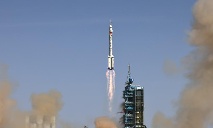Why do Chinese prices remain stable amid global inflation?

Photo: Xinhua
China's major commodities imports were generally characterized by declined volume and a sharp price increases in the first five months of this year, according to the latest data released by the General Administration of Customs on Thursday.
Specifically, Chinese imports of crude oil, coal, natural gas, and soybeans in the January-May period were down by 1.7 percent, 13.6 percent, 9.3 percent, and 0.4 percent year-on-year in terms of import volume, with their average import prices rising 55.6 percent, 105.3 percent, 70.3 percent, and 23.3 percent, respectively.
To a certain extent, the considerable rise in commodities prices shows that China has been facing much imported inflationary pressure from overseas markets in recent months. Nevertheless, despite the global high inflation, Chinese goods prices have remained within a reasonable range.
The country's consumer price index (CPI), a main gauge of inflation, rose 2.1 percent year-on-year in April, according to the National Bureau of Statistics (NBS), which is due to release the May CPI data on Friday.
Why can China keep domestic prices basically stable amid soaring global inflation? For starters, the disruption of global supply chains caused by COVID-19 is a reason for high inflation. However, since the early days of the pandemic, China has effectively brought the epidemic under control, ensuring the normal operation of domestic industrial chains and leading to relatively small shocks to China's supply chains compared with other countries.
Moreover, developed economies, led by the US, adopted expansionary monetary and fiscal policies, and the huge liquidity they injected into the market is another important cause of global inflation. By comparison, China has been pursuing relatively modest monetary and fiscal policies.
Even though the current COVID-19 epidemic resurgence has caused some difficulties for the Chinese economy, the government still appears relatively cautious in choosing the right stimulus tools, indicating its reluctance to see some long-term economic problem exacerbated due to improper short-term policies.
The difference between China and the US in terms of inflation and monetary policy underscores the different cycle and trend of economic development in the world's two largest economies. For instance, taming inflation has become the top priority of the US at the moment, while rate hikes have led to concerns over the growing risk of a recession in the US economy. In China, with relatively low inflation, the most important economic priority now is to stabilize growth.
Of course, there is no denying that China will continue to face great inflationary pressure from overseas, which will be challenge to China's economic policy choice in the future. The country needs to take precautions when it comes to the continuing issue of global inflation.
It needs to be pointed out that some Western media outlets have accused of China of adding to global inflation fears, citing its soaring factory prices. China's producer price index (PPI), which measures costs for goods at the factory gate, went up 8 percent year-on-year in April. But the PPI increase was due in large part to the surge in global raw materials prices.
In fact, China has actually played an active role in stabilizing global prices in recent months. This is because China has, to a certain extent, absorbed some of the imported inflationary pressure thanks to the massive industrial scale and complete industrial systems of its manufacturing sector.
This is also the unique advantage of Chinese exports, which has not only ensured the country's export growth, but also strengthened the status of Chinese manufacturing throughout the global industrial chain.
This is why the US cannot really decouple from China, and why the US must rely on Chinese manufacturing when it comes to reining in its elevated inflation.
Photos
Related Stories
Copyright © 2022 People's Daily Online. All Rights Reserved.









